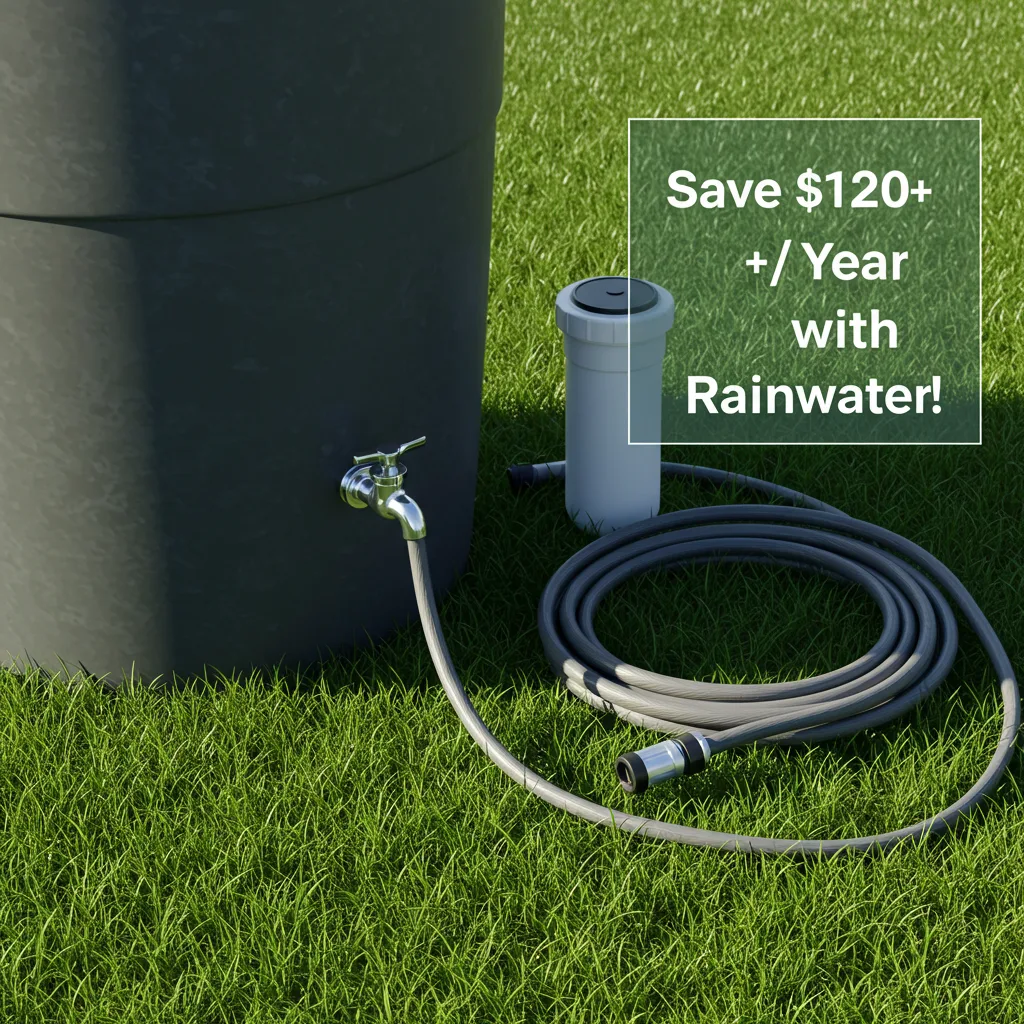DIY Rainwater Harvesting: Affordable Water Conservation for 2025
With 40% of U.S. states facing water shortages in 2024 (EPA), DIY rainwater harvesting is a game-changer for sustainable homes in 2025—whether you’re in drought-prone California or rainy New England. This beginner-friendly guide from EcoDweller.com shows how to build a functional rainwater collection system for under $200, slash your water bill by 30%, and contribute to eco-friendly living. Let’s turn your roof into a water-saving powerhouse!

Why Rainwater Harvesting Matters in 2025
The USDA reports residential outdoor water use accounts for nearly 9 billion gallons daily—30-50% of which can be replaced with harvested rainwater. Unlike complex solar projects, this system requires basic tools and aligns perfectly with eco-friendly home upgrades.
Key Benefits
- Save Money: Reduce water bills by $100+/year (varies by region)
- Drought-Proof: Maintain gardens during water restrictions
- Eco-Friendly: Decrease stormwater runoff pollution
- Simple DIY: No plumbing license required in most states
- Scalable: Start small with a single barrel system
Step-by-Step Rainwater Collection System
This 55-gallon barrel system takes under 4 hours to install. Tools needed: drill, jigsaw, wrench, and measuring tape.
Materials Checklist (Under $200)
| Item | Source | Cost |
|---|---|---|
| Food-grade plastic barrel (55 gal) | Local farms/Craigslist | $20-$50 |
| Downspout diverter kit | Home Depot/Lowe’s | $25 |
| Mosquito mesh screen | Hardware store | $5 |
| Spigot & overflow hose | Amazon | $15 |
1. Barrel Preparation (30 mins)
Clean your barrel with vinegar solution. Drill two holes:
- Top: 4″ hole for downspout connection (use jigsaw)
- Side: 3/4″ hole for spigot (6″ from bottom)
Secure mosquito mesh over the top hole with silicone caulk.
2. Downspout Modification (1 hour)
Cut your downspout 12″ above barrel height. Install the diverter following kit instructions—most snap together without tools. Angle the overflow toward your barrel’s top opening.

3. Barrel Setup (1 hour)
Place barrel on cinder blocks for gravity flow. Connect:
- Spigot to side hole (use rubber washer to prevent leaks)
- Overflow hose to top hole (direct water 6′ from foundation)
- Downspout to barrel top
Pro Tip
Add a charcoal filter ($30) if using water for edible plants.
2025 Legal Considerations
While most states allow rainwater harvesting, check local rules:
- Colorado: Limited to 2 barrels (110 gal total)
- Texas: Tax exemptions for systems
- California: Rebates up to $200 available
Search “[Your State] rainwater harvesting laws 2025” for updates.
Maintenance Guide
| Task | Frequency | Time Required |
|---|---|---|
| Clean gutters | Spring/Fall | 30 mins |
| Check mosquito mesh | Monthly | 5 mins |
| Winterize (cold climates) | Before first frost | 1 hour |
Creative Uses for Harvested Water
- Gardening: Pair with vertical gardens
- Car washing: Save 80-140 gallons per wash
- Emergency supply: Filter and boil for non-potable uses
Cost vs. Savings Breakdown
| Component | Initial Cost | Annual Savings | ROI Timeline |
|---|---|---|---|
| Basic system | $180 | $60-$120 | 1.5-3 years |
| With rebates | $80 | $60-$120 | <1 year |
Troubleshooting Common Issues
Leaky Connections
Apply waterproof silicone tape around joints.
Algae Growth
Paint barrel dark color or add 1 tsp bleach per gallon (avoid edible plants).
Low Pressure
Elevate barrel higher or add a small pump ($45).
Scaling Your System
For serious water savings:
- Link multiple barrels with connector kits ($15/ea)
- Install a 300-gallon tank system
- Add drip irrigation (saves 50% vs. sprinklers)
Frequently Asked Questions
Is rainwater safe for vegetables?
Yes, for soil irrigation (not direct leaf contact). Root crops are safest.
How much water will I collect?
1″ rain = 0.6 gal/sq ft roof. A 1,000 sq ft roof yields 600 gal per inch.
Will mosquitoes breed?
Not with proper mesh screens (holes <1.6mm).
Can I drink harvested water?
Only with advanced filtration—not recommended for beginners.
Conclusion
DIY rainwater harvesting is one of the most impactful eco-friendly home upgrades for 2025. Start small, save money, and join the water conservation movement. For more sustainable living tips, explore our indoor gardening guide or green investment ideas. Got questions? Share your rainwater projects below!

